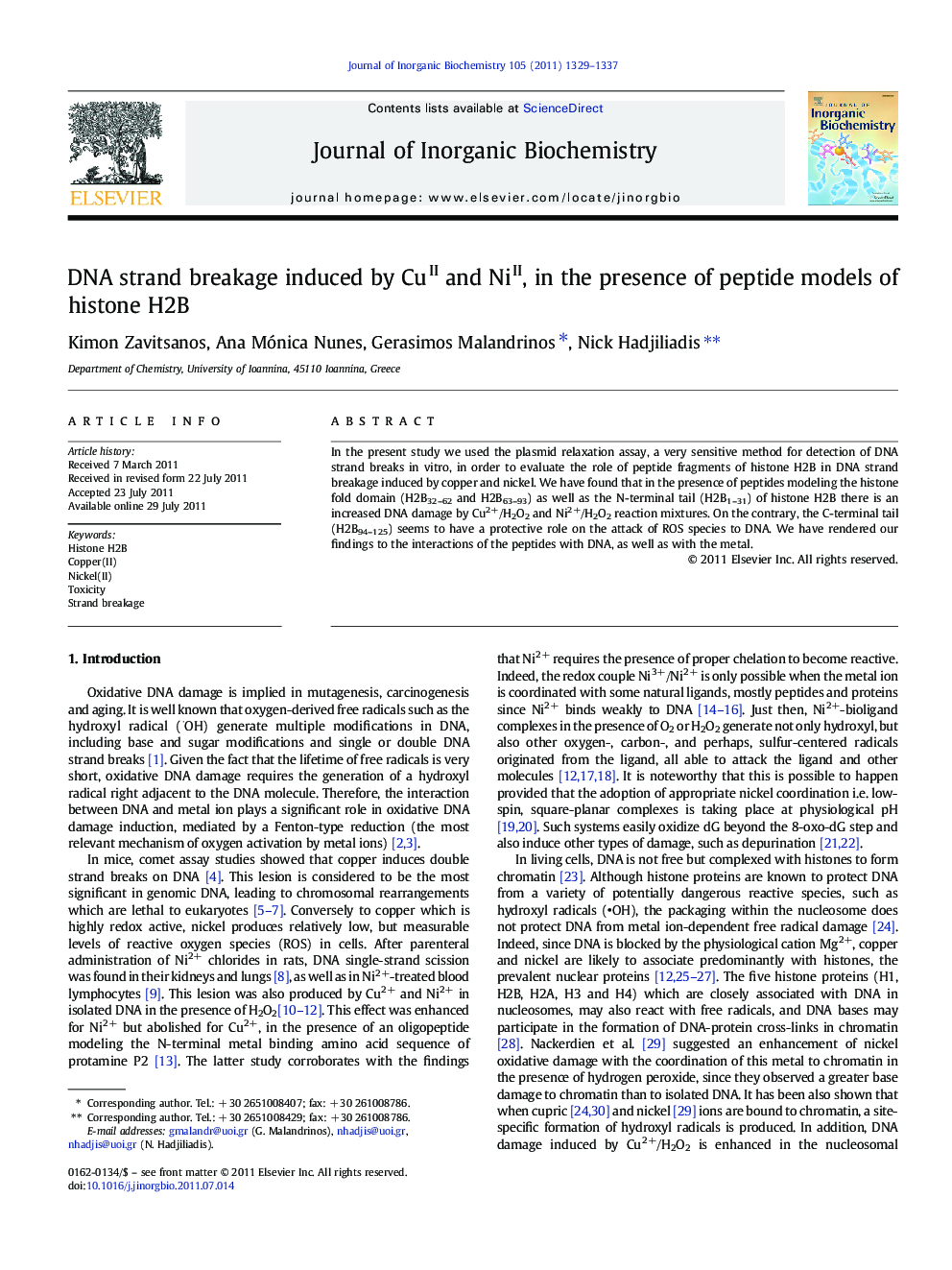| Article ID | Journal | Published Year | Pages | File Type |
|---|---|---|---|---|
| 1316099 | Journal of Inorganic Biochemistry | 2011 | 9 Pages |
In the present study we used the plasmid relaxation assay, a very sensitive method for detection of DNA strand breaks in vitro, in order to evaluate the role of peptide fragments of histone H2B in DNA strand breakage induced by copper and nickel. We have found that in the presence of peptides modeling the histone fold domain (H2B32–62 and H2B63–93) as well as the N-terminal tail (H2B1–31) of histone H2B there is an increased DNA damage by Cu2+/H2O2 and Ni2+/H2O2 reaction mixtures. On the contrary, the C-terminal tail (H2B94–125) seems to have a protective role on the attack of ROS species to DNA. We have rendered our findings to the interactions of the peptides with DNA, as well as with the metal.
Graphical abstractWe used the plasmid relaxation assay in order to evaluate the effect of H2B peptide models on DNA strand breakage induced by Cu(II) or Ni(II) and H2O2 reaction mixtures. We have found that DNA relaxation is enhanced in the presence of peptide models mimicking the histone fold domain.Figure optionsDownload full-size imageDownload as PowerPoint slide
